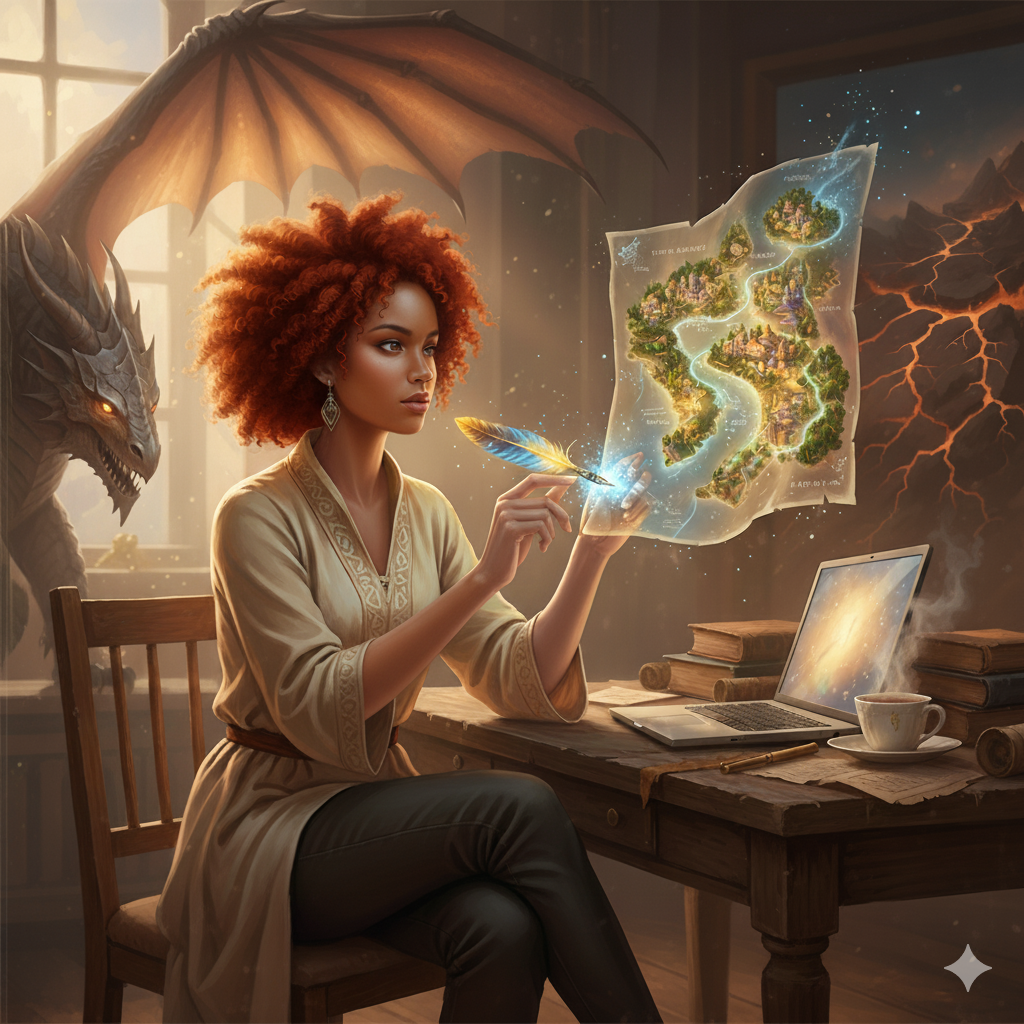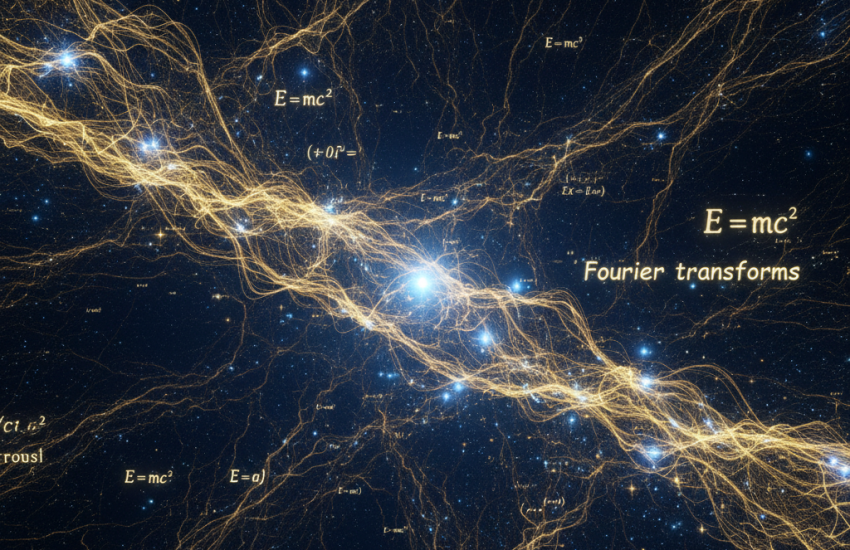Beyond the Map: Writing Fantasy That Stands with Martin, Jemisin, and Hobb
So, you’re an aspiring fantasy author with a “Game of Thronesy” epic brewing in your imagination. Where do you begin? The path to creating a rich, believable world can seem daunting. But by looking at the masters of the genre, we can distill the core elements that make their work resonate with millions.
In a recent World Reading Club podcast, we used George R. R. Martin’s monumental A Song of Ice and Fire as a starting point to explore what makes epic fantasy tick. By comparing his work to modern giants like N.K. Jemisin and Robin Hobb, we uncovered a blueprint for success that any new author—especially women forging their path in the genre—can learn from.
Listen to “Crafting Epic Worlds: A Female Author's Guide from Martin to Jemisin” on Spreaker.The Foundation: World-Building That Breathes
Every great fantasy novel is built on the foundation of its world. We often think of detailed maps first—and indeed, that’s a fantastic start. But as we discussed, truly immersive world-building goes far beyond geography.
- Internal Consistency: Your world needs mechanics. How do resources flow? What are the travel routes? What are the social hierarchies? This internal logic, seen in the political machinations of Westeros or the geological instability of Jemisin’s Stillness, creates a “stable stage” that makes the fantastical feel believable.
- Cultures and Histories: The cultures, histories, and societal structures of your world must feel lived-in. They shape your characters’ motivations and conflicts, providing a deep context for the story.
The Heart: Complex Characters and Moral Ambiguity
Forget simple heroes and villains. The most compelling characters, from Martin’s Tyrion Lannister to Hobb’s FitzChivalry, are morally complex. They operate in shades of gray, making difficult choices based on flawed, human motivations. This moral ambiguity is what forges a deep, emotional connection with the reader, making them invest in the character’s journey.
The Magic: Systems with Stakes and Consequences
A unique magic system can define your world. However, the most effective systems are those with clear rules and consequences.
- Consistency is Key: Whether it’s the subtle, dangerous magic of Martin’s world, the earth-shattering Orogeny of Jemisin, or the telepathic Wit and Skill of Hobb, the magic must operate by consistent rules. This allows readers to understand the stakes.
- Costs and Limitations: Magic shouldn’t be a free pass. The psychological costs in Hobb’s work or the social oppression faced by Jemisin’s Orogenes create necessary challenges and prevent characters from becoming overpowered. Your magic system should complement the plot and character development, not overshadow them.
The Engine: Narrative Structure and Pacing
A compelling world and characters need a powerful engine: the narrative. A strong structure—be it intricate political maneuvering, an intimate character journey, or escalating high-stakes action—keeps readers engaged. The key is pacing: a delicate balance of action, character development, and world-building that creates a rhythm, turning your book into a “page-turner.”
Finding Your Place: A Quick Guide to Fantasy Genres
Knowing your subgenre helps you understand reader expectations and market your work.
- High Fantasy: The broad term for stories set in a completely separate, secondary world.
- Epic Fantasy: A sub-genre of High Fantasy defined by its vast scope, large cast of characters, and world-altering conflicts. (Both Martin and Hobb write Epic Fantasy).
- Urban Fantasy: Fantasy set in our world, where magical elements exist hidden within a modern, urban setting (e.g., Jim Butcher’s Dresden Files, N.K. Jemisin’s The City We Became).
The Long Game: Building for Success
George R. R. Martin’s A Game of Thrones was published in 1996 but wasn’t adapted until 2011. This 15-year gap highlights a crucial lesson: focus on creating a foundational work of exceptional quality. Cultivate fan engagement, build your community, and master your craft. A powerful story will find its audience and can open doors to adaptations and ancillary income streams for years to come.
Conclusion
The journey of an aspiring author is a marathon, not a sprint. By studying the pillars of success in the works of Martin, Jemisin, and Hobb—immersive world-building, complex characters, thoughtful magic systems, and compelling narratives—you equip yourself with the tools to build your own unforgettable worlds. Now, go write your epic.
This post is based on the discussion from the World Reading Club podcast episode “Crafting Epic Worlds.” Listen to the full conversation for a deeper dive into these topics and more.
Related:The Literary Agent’s Financial Playbook: Deals, Rights, and Royalties (Part 2)
Analysis of the Conversation
This session successfully transitions from a general inquiry into George R. R. Martin’s work to a targeted discussion on the actionable takeaways for writers. The key strengths and themes developed are:
- Author-Centric Focus: The conversation remains firmly fixed on the goal: to provide value for an aspiring author. Every topic—from Martin’s biography to genre definitions—is framed around its relevance to a writer’s craft and career.
- Deepening the “Why”: The discussion moves beyond what successful authors do (world-building, complex characters) and begins to explore why it works. For example:
- World-Building: It’s not just about maps, but about creating a “stable stage” with internal consistency in mechanics (travel, resources) that makes the story believable.
- Magic Systems: The importance of “psychological costs” and limitations (as seen in Hobb’s work) is highlighted to prevent characters from being overpowered and to create compelling challenges.
- Narrative Structure: The concept of “pacing” is defined as a delicate balance between action, character development, and world-building that creates “page-turners.”
- Genre Clarification: A very practical and clear distinction is made between key fantasy subgenres:
- High Fantasy: The broad umbrella for stories set in a secondary world.
- Epic Fantasy: A sub-genre of High Fantasy characterized by vast scope, world-altering conflicts, and numerous characters.
- Urban Fantasy: Fantasy set in our world, typically in an urban setting.
This provides a crucial vocabulary for any author to position their work within the market.
- The Long Game: The 15-year gap for Martin’s adaptation is reframed not as an anomaly, but as a testament to building a foundational work so strong that it sustains a fanbase and attracts adaptation interest years later. This emphasizes the importance of focusing on core craft first.
- Personal Connection: The host’s personal reflections on reading Nora Roberts and Jim Butcher add a relatable layer, demonstrating how these craft elements (like internal dialogue and relatable protagonists) actually function to engage a reader emotionally.
Key Takeaways for Aspiring Fantasy Authors: Insights from George R.R. Martin, N.K. Jemisin, and Robin Hobb
This discussion, centered on the work of George R.R. Martin and comparisons to acclaimed female authors N.K. Jemisin and Robin Hobb, yielded several crucial insights for writers, particularly those new to the fantasy genre.
1. On World-Building: Create a Living, Breathing World
- Go Beyond the Map: While creating detailed maps and geographies is a foundational step, successful world-building extends to cultures, histories, and the societal structures that feel grounded and believable.
- Internal Consistency is Key: The world’s mechanics, from travel routes to resource distribution, should feel logical and consistent, providing a stable stage for the story.
2. On Character Development: Craft Complex, Relatable Characters
- Moral Ambiguity: Move beyond simple heroes and villains. Create characters with varying motivations who face morally grey situations, making them more realistic and engaging.
- Intimate Perspectives: Don’t just focus on epic events; explore the personal journeys and internal struggles of your characters. This is a noted strength in the works of both Jemisin and Hobb, providing a deep emotional connection for the reader.
- Gender and Internal Dialogue: Be mindful of perspective. The internal dialogue of characters can differ significantly based on the author’s and character’s gender, influencing how emotions, desires, and physical attraction are portrayed and prioritized.
3. On Magic Systems: Balance Uniqueness with Narrative Function
- Develop a Unique System: Avoid overused tropes by creating a magic system with its own internal logic and rules. Examples include:
- N.K. Jemisin’s Orogeny: A system tied to geology and tectonic plates, with severe consequences for its use.
- Robin Hobb’s Wit & Skill: Two distinct systems focusing on telepathic bonds with animals and mental communication, each with significant psychological costs.
- George R.R. Martin’s Mysterious Magic: A more subtle approach where magic is unpredictable and often dangerous, adding to the world’s realism and mystery.
- Consistency and Clarity: Ensure your magic system operates by consistent rules, even if those rules are not immediately fully explained to the reader.
- Complement the Story: The magic system should serve the narrative, not overshadow it. It should create challenges and stakes for the characters without detracting from other core elements like plot and character development.
4. On Narrative and Plot: Structure for Maximum Engagement
- Strong Narrative Structure: Whether through intricate political maneuvering (Martin), intimate character-driven journeys (Hobb), or escalating high-stakes plots (Jemisin), a compelling narrative structure is essential for keeping readers engaged.
- Pacing Matters: Balance action with character development and world-building to maintain a rhythm that keeps the reader turning the page.
- Subvert Tropes Creatively: Common tropes (e.g., a journey to a new planet, a giant spider creature) can be effective touchstones, but they are most powerful when reinvented or subverted to surprise the reader and offer a fresh perspective.
5. On the Path to Publication and Adaptation
- Build a Foundation for Success: The 15-year gap between the publication of A Game of Thrones (1996) and its TV adaptation (2011) highlights that a dedicated fanbase and critical acclaim are built on the strength of the core work: world-building, characters, and narrative.
- Cultivate Fan Engagement: Online buzz and fan communities can play a significant role in demonstrating a story’s adaptation potential long before official deals are made.
Final Thought for Authors: The success of authors like Martin, Jemisin, and Hobb stems from their mastery of these core elements. By focusing on creating rich worlds, complex characters, and unique magical systems, all woven together with a compelling narrative, new authors can position themselves to make a powerful and lasting impact in the world of speculative fiction.


